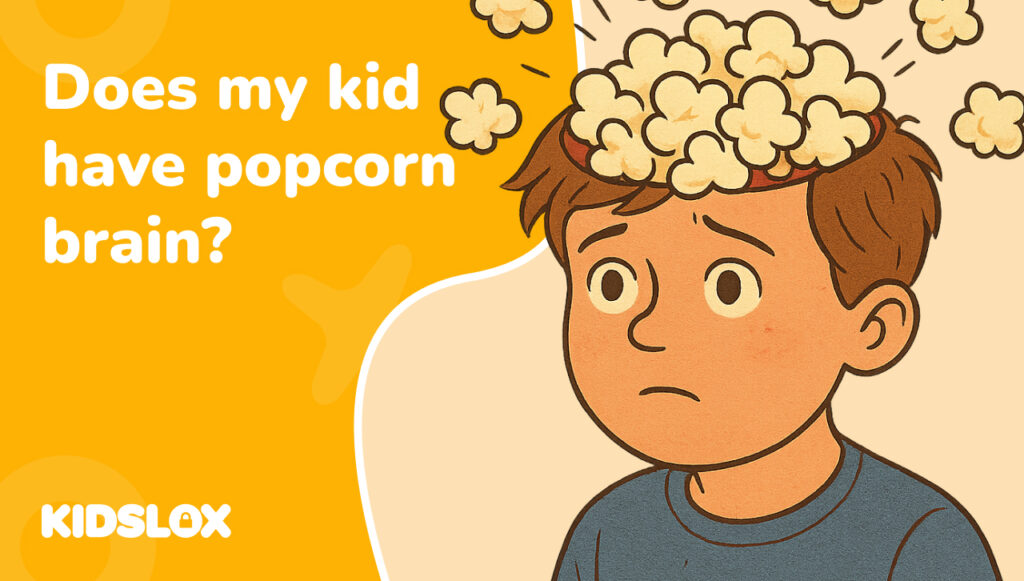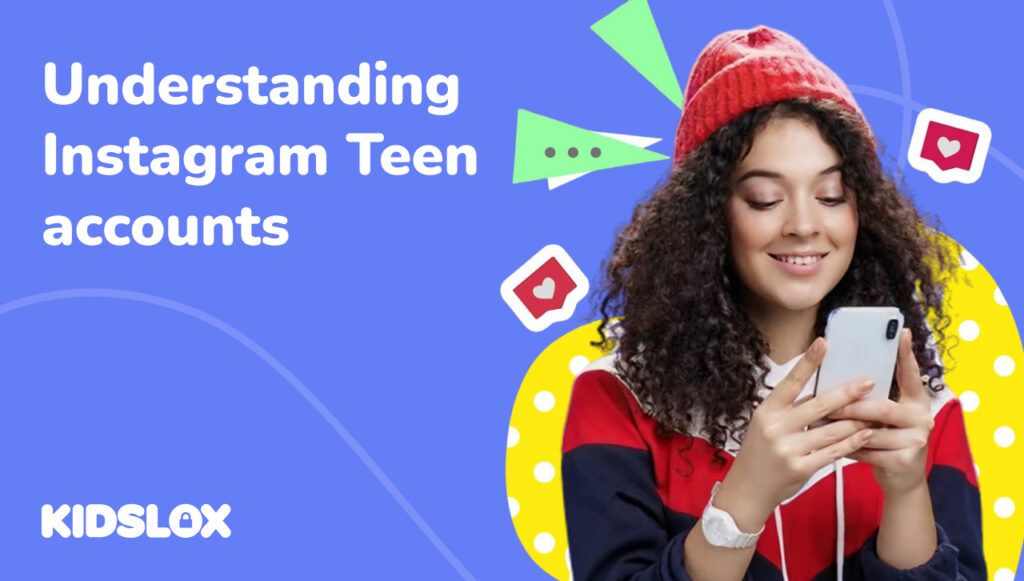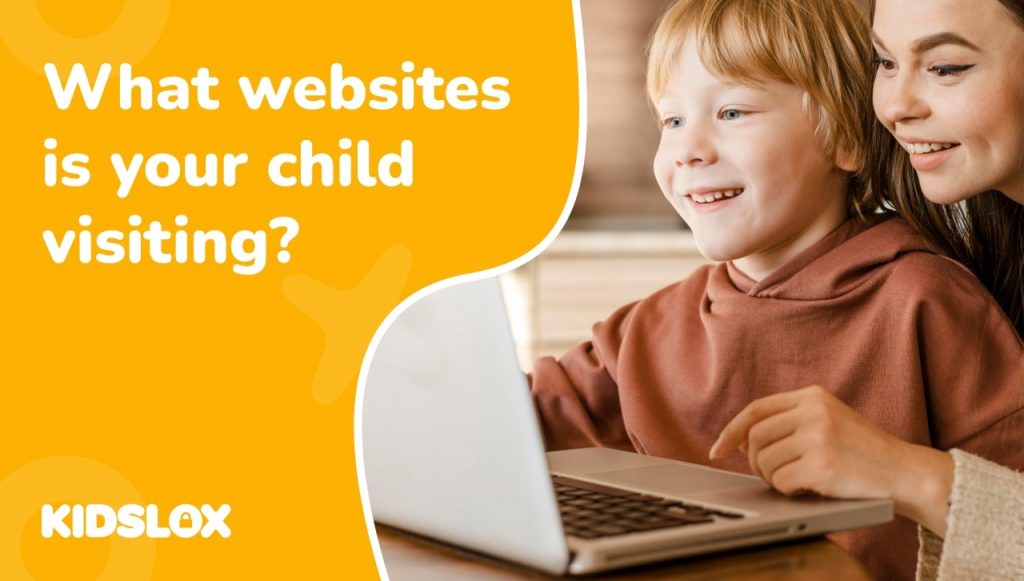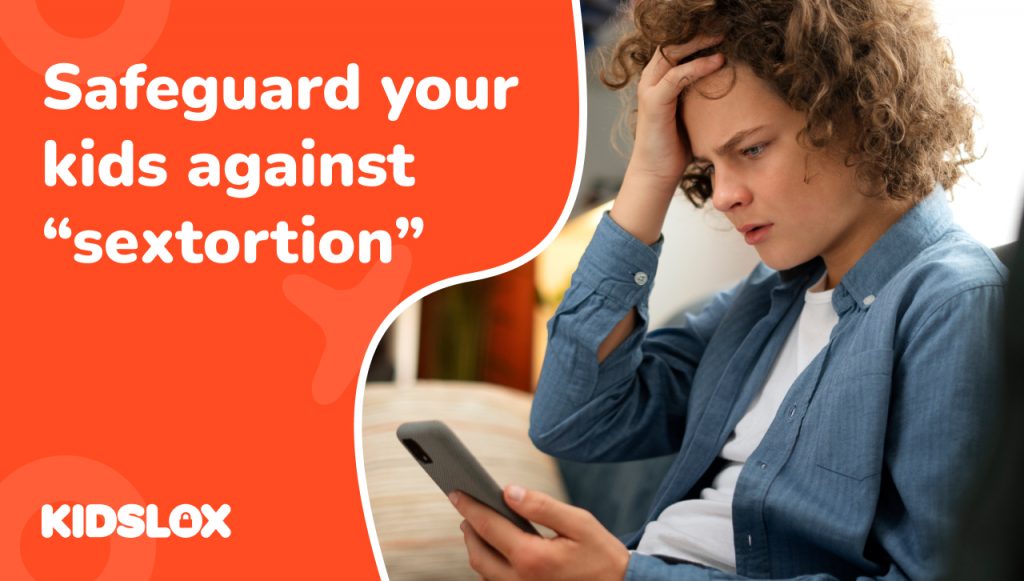What It Is, How It Affects Kids, and What Parents Can Do About It.
Ever feel like your child can’t sit still? Are they constantly flipping between apps, games and videos, or struggling to stay focused on one thing for more than a few minutes? In today’s world of endless digital stimulation and shrinking attention spans, a new term is starting to gain traction: popcorn brain.
What is Popcorn Brain?
The term, coined by Dr. David Levy, describes a brain overstimulated by the digital world: popcorn brain meaning refers to thoughts that jump and pop as quickly as the next notification or TikTok video.
In simple terms, it’s what happens when our minds — especially young, still-developing ones — get used to high-speed, constant stimulation, and find it hard to cope with anything slower.
Popcorn brain is a catchy term, but it’s sparked debate. Some experts argue it oversimplifies a complex issue, suggesting our brains are “damaged” by tech when in reality they’re adapting. Others worry it pathologises normal digital behaviour, especially in kids. Still, many agree that constant exposure to fast-paced content can impact focus, patience and emotional regulation — particularly in developing minds.
Critics say we need better research; supporters say we need better habits to stop popcorn brain syndrome consuming young people’s attention spans. Whether you see it as a modern myth or a real mental shift, popcorn brain has opened up important conversations about how we use technology — and how it uses us!
So what exactly does popcorn brain mean for children growing up today?
Commentators on ‘popcorn brain’ worry that young people’s developing minds, conditioned by fast, flashy entertainment, may struggle to stay engaged with everyday activities. It’s not because they’re lazy, rude, or badly behaved — it’s because their brains are learning to expect life to move at the speed of Wi-Fi.
Normal things — schoolwork, conversations, hobbies — can feel “too slow” or boring compared to the instant rewards of gaming, social media, and videos.
The problem is, real life doesn’t operate at hyper-speed. Skills like focus, patience, creativity, and emotional regulation are all built by engaging with slower, more sustained activities.
When kids’ brains get locked into the ’popcorn brain’ cycle, those skills can weaken and when the young person is expected to conform in traditional settings like the classroom, challenges can arise.
That’s why recognising popcorn brain symptoms early matters — the earlier we intervene, the easier it is to gently rewire healthier habits.
Popcorn Brain ‘Symptoms’ — Signs Your Child Might Be Struggling with Focus
Popcorn brain symptoms can look different for each child, but here are the most common red flags:
- Short Attention Spans: Your child finds it hard to stick with one task, even if it’s something they normally enjoy.
- Irritability and Impatience: They get frustrated when things don’t happen instantly — like waiting for a page to load, a game to update, or even standing in line at a shop.
- Multitasking Obsession: They constantly flip between devices or activities, rarely focusing fully on one thing at a time.
- Screen Dependency: Screens become their go-to coping mechanism for any boredom, frustration, or quiet moment.
- Emotional Dysregulation: Minor setbacks (like losing a game or being asked to wait) cause outsized emotional reactions.
- Difficulty Enjoying Offline Activities: Hobbies like reading, playing outside, or building something can feel dull or too demanding.
While it’s normal for kids to be restless sometimes, consistent patterns like these could signal that popcorn brain syndrome is developing.
Popcorn Brain ADHD — What’s the Connection?
Many parents notice that popcorn brain symptoms mirror those present in many children (and adults) with ADHD like fidgeting, impulsivity and zoning out.
ADHD (Attention-Deficit/Hyperactivity Disorder) is a medical, neurological condition present from birth, often diagnosed in early childhood. Kids with ADHD naturally have brains that crave stimulation and struggle with regulation.
Popcorn brain, on the other hand, is an environmental effect — a learned response to constant digital input. However, some researchers believe that children with ADHD – or similarly reported behaviours, are more vulnerable to the phenomenon of ‘Popcorn Brain’.
If your child already has ADHD, managing their screen environment carefully becomes even more crucial.
Why Slow Is Powerful — And How Screens Rewire the Brain
The human brain wasn’t designed for endless high-speed stimulation.
Every ping, scroll, and notification lights up our brain’s reward system — releasing tiny bursts of dopamine, the “feel-good” hormone. Over time, the brain starts craving faster and faster hits to feel engaged — and slower activities can feel uncomfortable, even painful.
This rewiring process especially impacts children because:
- Their prefrontal cortex (the part responsible for focus and decision-making) is still developing.
- Neural pathways are more flexible (neuroplasticity), meaning habits form faster.
If the only habits formed are built around rapid-fire stimulation, kids may lose their natural ability to focus, daydream, or persist through challenges — all critical life skills for later success.
Because children’s brains are still flexible, positive changes can reverse the effects of popcorn brain syndrome surprisingly quickly.
How to Help Your Child Manage Popcorn Brain
If you see signs of popcorn brain or screen overstimulation, there’s a lot you can do to help — without going full “screen ban” (which rarely works long-term).
- Set Healthy, Predictable Limits
Use an app like Kidslox to set daily screen time limits and block distracting apps during homework time or sleep hours. Clear, consistent boundaries give kids the structure they need to thrive.
- Schedule Screen-Free Zones
Create sacred screen-free times — like during meals, in the car, or in bedrooms.
This builds “slow time” into the day naturally.
- Reintroduce Boredom (Gently)
Boredom isn’t bad — it’s the birthplace of creativity and resilience.
Encourage your child to sit with mild boredom without instantly reaching for a device. Offer slow alternatives: drawing, building, reading, or just daydreaming.
- Talk About Brain Health
Frame screen limits positively: “We’re helping your brain grow stronger by giving it more kinds of experiences, not just the fast ones.”
Kids understand more than we give them credit for, especially when you frame it as a team effort.
- Model It Yourself
Children copy what they see. If they notice you taking device-free time, reading a book, or engaging slowly with the world, they’ll follow your lead.
Helping Kids ‘Pop’ Back Into Focus
Popcorn brain – or screen overstimulation – is a byproduct of living in a hyper-connected world — but it’s not inevitable.
Popcorn brain isn’t just a kids’ issue — adults are feeling it too. The constant scroll, the multitasking, the inability to sit still without a screen — it’s rewiring our brains for distraction. And kids are watching. If we want them to build healthy relationships with tech, we have to model it ourselves. That means putting your phone down during dinner, resisting the urge to check emails at the park, and showing them what real focus looks like. Because if they see us choosing presence over pings, they’ll learn to do the same.
By building healthier digital habits, you can help your child strengthen their focus, build emotional resilience and find joy in real-world experiences again.





